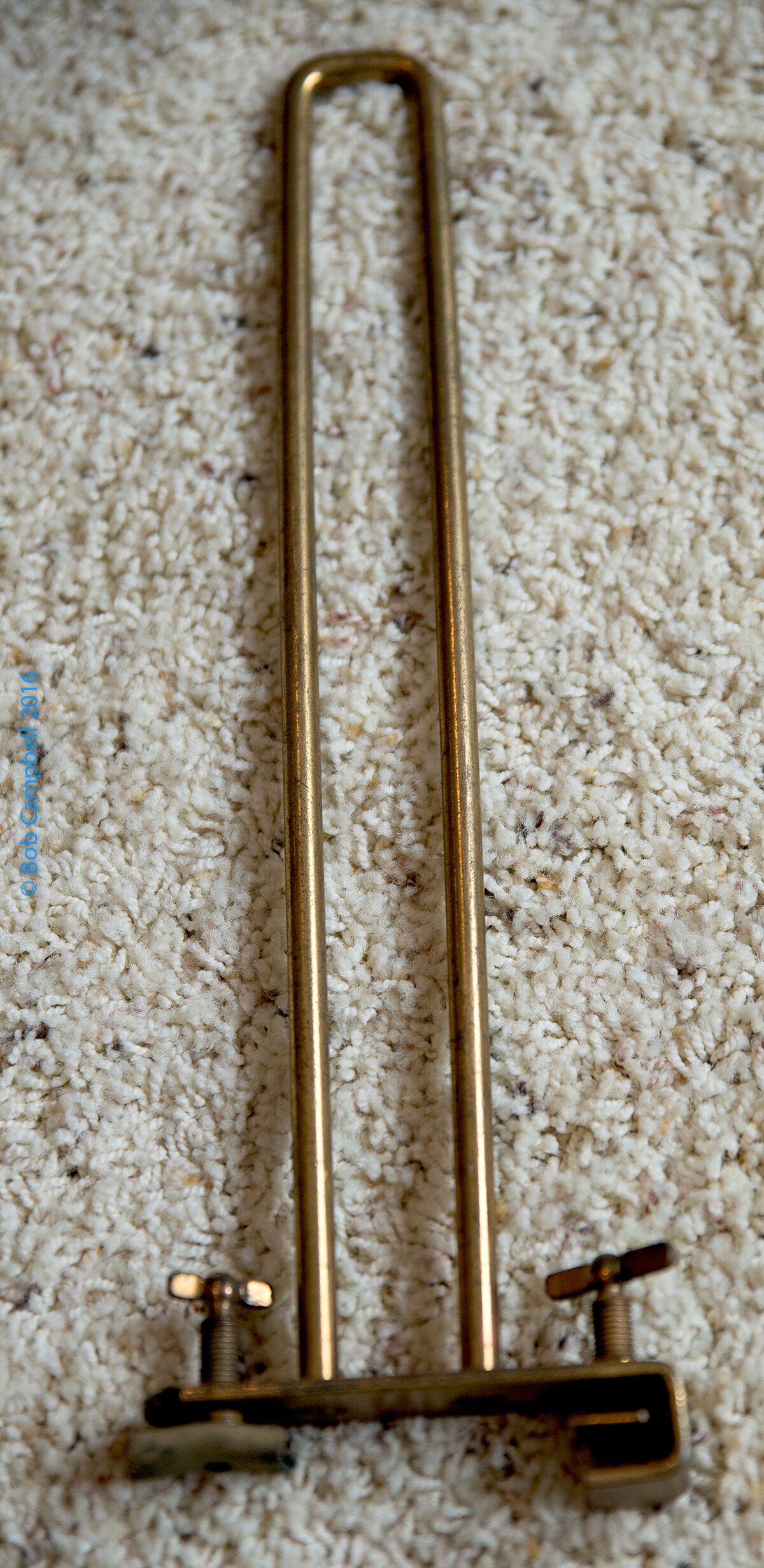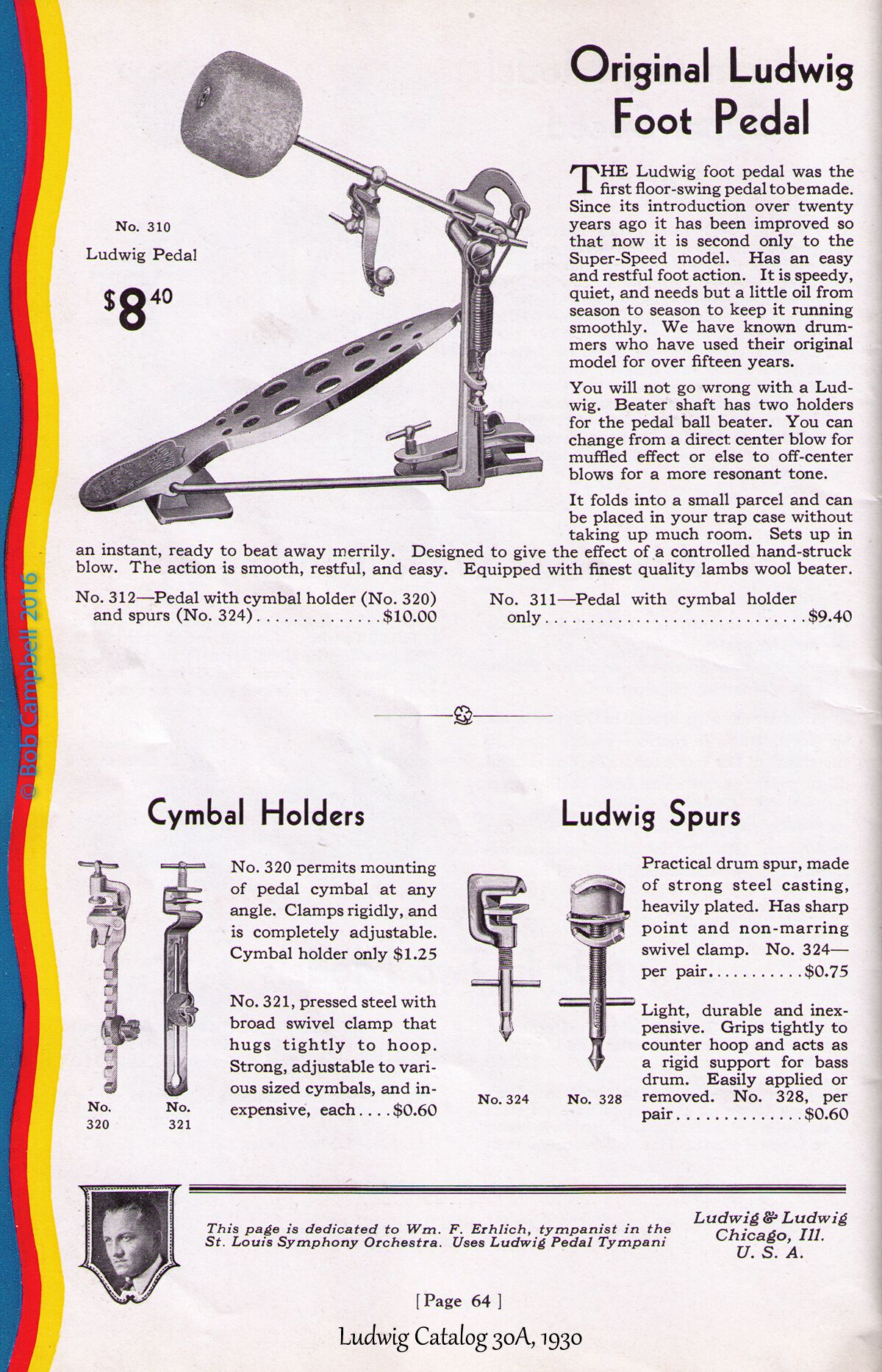“Every Drum Tells A Story”
by Bob Campbell
In my relentless pursuit of vintage drums, I came across an interesting Ebay listing: “Early 1900's Vintage Ludwig Drums, Black Beauty Snare, Zildjian, Zenjian Cymbals”. While the pictures weren’t very sharp, I could definitely see a 1920s-1930s engraved Ludwig Black Beauty in what appeared to be the original case. There were four cymbals, a bass drum and clearly a bunch of assorted hardware, all in De Luxe finish. Normally, I just collect snare drums but in this instance, I decided to make an exception. So I pulled the trigger.
I received two packages, one with the black Corbin case containing the snare and all the goodies, and another with the bass drum. It reminded me why I collect snare drums; shipping on a bass drum is not cheap! I had to pick the lock since there was no key (not something I’ve had a lot of practice doing so please don’t get the wrong impression). I go it open and voila - all the hardware with the exception of one piece had the golden De Luxe finish and was in wonderful condition.
Not surprisingly, I unpacked the snare drum first. I was pleasantly surprised to find an engraved Ludwig Black Beauty, Super-Ludwig, with 10 tube lugs, and calf heads in truly excellent condition. I chatted with John Aldridge recently about the drum and he believed it was a 1929-1930 engraved Black Beauty De Luxe based on the engraving pattern (6 leaves, with 4 flat, squared off petals in the center of the pattern; Ludwig logo within the florette pattern) and the drum having a two-piece shell. Unfortunately, much of the catalog artwork was recycled so the 1929 catalog image of the Ralph Smith Outfit is shown with the older Black Beauty engraving pattern. The 1932/33 catalogs do show the newer pattern (and later renamed the “Ludwig Standard Outfit”). This Black Beauty also came with the original stand in De Luxe finish.
The black ebonized, mahogany bass drum with De Luxe hardware was huge – 14 X 28”! It was accompanied by the bass drum pedal and felt wool beater. I tried it out a little and the sound was really delightful – a warm, voluminous thump with great punch.
The calf head on the bass drum may have been original given the wear, various dated writing on the drum, and the “Wm. F. Ludwig TRADEMARK Selected” stamp. Indeed, when looking at the snare drum heads, they also appeared original, with a variety of dated writing on the heads in ink. While barely legible in some spots, there were some visible writings from 1932 – 1938: “Dick” ’32, Fanny Mae ‘38’, Too Kids? “33”, Buddy ’33, Everett ’33, TIP, Young, and perhaps “L-Byer” and “Mojum” ? (the latter two being quite hard to read). I looked everywhere on the internet to se if these were band leaders, shows, or vaudeville acts but came up with nothing. I was quite disappointed. If any of you have any clue as to what each of these are, I would be most grateful if you would contact me (fallendrummer@mac.com).
There were 4 cymbals within the case: one 14” Zenjian (embossed on the front with: “TRADEMARK ZENJIAN, Ludwig”, and ink-stamped, “MADE IN ITALY” on the underside), two 12” with no markings; one with holes for sizzles which were missing, the other likely used as a cymbal played by the bass drum pedal; and one 11” A. Zildjian splash (with an ink signature under the bell). While some have thought Zenjian to be true Turkish cymbals, they were actually made in Italy. Zenjian were listed in the Ludwig catalogs as “true Turkish type cymbals”; note the use of the words, “Turkish type” and not “Turkish”. Clever marketing! The unmarked cymbals are likely Ludwig factory made cymbals. As noted in the 1930 Ludwig catalog, they are, “spun by skilled workers in the Ludwig factory by a hand process that tempers the cymbal to exact tonal requirements.” The 12” was only $3.00 in 1930. The second 12” cymbal was likely a Ludwig Sizzle cymbal (for which you could buy special Sizzle Sticks) but with the sizzles removed. Ludwig described these as, “a cymbal that makes ‘em all sit up and take a second look at ‘That clever drummer!’ Those listening to you play will step up closer to see just how you do it. Then, the jumping ‘Sizzlers’ will take their eye, especially when you draw the notched sizzle stick over the edge of the cymbal to produce chattering and raspy rhythm effects.” – Also, only $3.00. The 11” paper-thin A. Zildjian splash was likely purchased separately but based on the stamp and ink signature, dates from a similar time period (late 1920’s, early 1930’s).
I identified rest of the hardware and traps using my 1930 Ludwig catalog 30A; always an educational experience. The most easily recognized were the 1.5 X 12” Ludwig Piccolo Slap Stick (Item No. 547: “Use them in pairs for ‘rapid fire’ rhythm beats, ‘bones’ and ‘roll’ effect. A dandy for theater and dance drummers.”), mahogany Tone Block with holder (Item No. 955: “Ludwig Tone blocks are resonant and tonally soft – plus the ‘clickety clack’ quality. They are two-toned. A different tone in each end of the block. Thus a variety of tonal effects can be secured from a single block.”), brushes, a.k.a. Ludwig Synco-Jazz sticks (Item No. 605 with brass handles) and Castanets (Item No. 480). The U- and L-shaped hardware were Double Post and Upright Cymbal Holders (Item Nos. 426 and 476N, respectively). The “saw-toothed” hardware was also a cymbal holder but for mounting a pedal cymbal to the bass drum (Item No. 320). Aside from some small clamps, the only remaining item of significance were the bass drum anchors, a.k.a. Ludwig Spurs (Item No. 324) and bass drum muffler (Item No. 670), the latter being the only hardware without De Luxe finish.
So all in all, the only things missing from the outfit were the tambourine, trap table, Chinese tom-tom and Ludwig Elementary Drum Method book…and the sizzles for the sizzle cymbal. The condition of everything was really much better than I expected and looked truly amazing in the De Luxe finish. However, that being said, I’m really a snare drum guy. This outfit belongs in the hands of someone who will take the time to find the remaining pieces and restore the kit to its original brilliance. While I’ve had many offers to sell the snare separately (as I have now another 1929-30 Ludwig Black Beauty De Luxe, Super-Ludwig), I just can’t bear to separate this kit, which has survived over 85 years. I do hope one day to find that person and share this wonderful piece of drum history. It deserves love and care and at least another 85 years of life.
Many thanks to John Aldridge for his expert assistance in the writing of the article.







































